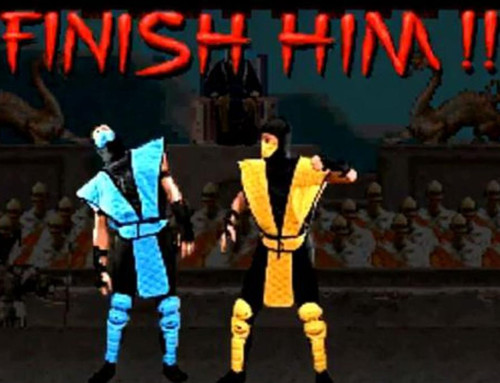Everyone has seen boards being broken by martial artists. It’s in nearly every demo ever made in the history of martial arts. It’s a crowd pleaser and many Taekwondo and Karate styles make use
of board breaking as part of their rank exams.
You may have watched a youtube video on Taekwondo and saw some incredible board breaks going on and thought to yourself, “Is that just a trick?” They seem to break real easy, so it can’t
be that hard to break.
The answer is….maybe.
Many of the board breaks you see in demos and youtube videos are fairly easy to break and are really just targets that make a shocking noise to create, “ooohs” and “awes”. Yet, the boards that
are broke at rank exams in many schools are quite different and not as easy to break. Let’s start by briefly explaining two of the most used boards in each demos and rank exams.
Pichipen demo boards
A lot of those demo and competition boards are pichipen wood that are glued together to make a board. This helps remove the splintering caused by pine boards that are used in many schools for
rank exams. Pichepen is very hard, but the board is broken where it is glued (if glued) as the board is about twice as hard as pine. Therefore it works great for demos as it creates a very clean
break without the mess of splinters all over the floor that could cause issues. The size of the board matters, however. I’ve seen all different sizes in this form, both in the length and
thickness. Usually the thickness is either 3/8” or 3/4". The 3/8” are commonly used for the high flying board breaks and for kids as they are fairly easy to break. The 3/4" are considerably harder to break and are usually used by adults in class and rank exams more than demos. The view of these demos don’t usually know the difference, so why add difficulty that isn’t seen? That’s why 3/8” are used more often during demos.
I’ve discovered at a tournament, I and some students attended, that stacking these glued 3/4″ boards are extremely difficult as the glued portion needs to line up and not all boards are glued at
the same spot. We did not know this at the time and failed at breaking the boards during a competition.
Pine Boards
At my studio, and many studios, Pine boards are used for rank exams over pichipen. There are a few reasons for this. For starters, pine is much more easily available at your hardware store and
considerably cheaper to cut on your own. Secondly, it’s a softer board so less chances of injuring the fist or foot or whatever is being used to break the board. Lastly, it’s much more consistent
when breaking stacked boards without spacers as the boards are not glued together and will break at the same spot and therefore more reliable to break when stacked.
Side note as it relates to stacked boards breaking. The back board breaks first. If you see this “ki” demonstration of breaking just one board (or brick) on a video, know this has nothing to do with
ki or chi power, it’s just science. The back board needs to break first in order to create room for the next one to break, then the one in front of that, and so on, for however many you have
stacked. Videos and demos like this, are definitely in the category of “trick”.
The downside to pine is that it can vary considerably based on many factors. I’ve bought pine boards from many different places over the years and I’ve learned how to find the proper boards
for consistent breaking. Some pine boards are still a bit “sappy” and therefore considerably harder to break.
We had a board that someone brought in YEARS ago at my instructors studio when I was a first degree black belt. It seemed to have been mixed with concrete and sap and who knows what else.
Every so often someone tried to break it, and failed. One day my instructor (who I’ve seen break a stack of 5 boards with no spacers with ease), decided to break the board to finally get rid of it
as we were moving and cleaning out the old boards in storage. He took a crack at it with a side kick. It was just the one board, not stacked with any others. He broke it, but just barely. It bent
and cracked open as if god himself was trying to hold it together. I’ve never seen a pine board that difficult to break. Compare that to a single “normal” pine board of the same size that can be
broken just be applying bodyweight to the center with ANY amount of speed behind the technique.
Aside from whether or not the board is dried out or sappy, the size of the board can determine how difficult it is as well. Generally speaking, all boards are 12” wide and 1” thick, then are cut
to the length of the breakers age up to 11”. So if an 8 year old student is breaking a board, it would be 12”x8”x1”. Typically I have all of my youth students break 12”x11”x1” boards, but
only 1. Then for my adults over 14, they do that same size but stacked without spacers. After black belt, the adults then start doing 3 or 4 boards thick without spacers. Adding more difficulty
is speed breaks, where the board is suspended rather than firmly supported at both ends. Throwing the board up in the air to break it while not even touched, and even breaking boards in
front of someones face/body demonstrating stopping power, breaking the board but stopping before striking the person directly behind it. There are many other possibilities, but these are
mostly demonstrations of skill and practice, not really anything of importance as it relates to self-defense.
Another thing that effects the difficulty of the board is the grain and knots. Wide space between the grains is slightly harder than very thin space between the grains. Knots, however, are the
bigger factor. A huge not right in the middle of the board makes things difficult as the board will not break through the knot, but around it. Which can make it much harder to break the board.
Generally speaking, 1 board is about the equivalent to breaking a rib bone in regards to how hard it is to break. Mind you, this is if someone is holding securely a rib bone, not floating in the body
where the body can absorb power and move. Two stacked boards is not just double the difficulty though. Stacking boards starts to multiply the difficulty considerably.
Generally speaking, 1 board is about the equivalent to breaking a rib bone in regards to how hard it is to break. Mind you, this is if someone is holding securely a rib bone, not floating in the body
where the body can absorb power and move. Two stacked boards is not just double the difficulty though. Stacking boards starts to multiply the difficulty considerably.
Now, let’s revisit the initial thought of whether or not board breaking is a trick or not. It can be, and the easiest version of breaking is done for demos. However, for rank exams, it is one of the
hardest parts of testing for most people as stacking boards and striking in the center with power is not as easy as one might think.
Throw and elbow through the center of 1 pine board and most adults will find success as long as the board is being help properly. Throw a spinning hook kick through 2 or 3 boards and success
will be limited to only the most skilled martial artists. As an instructor, I use these board breaks to help determine if a student has the accuracy and power to make a technique useful in a self-
defense situation. To break a stacked board, without spacers, it must be struck as close to the center as possible with considerable power and with a proper strike. The board may be 12”x11”,
but the striking point is close to 3”x3” in order to have success in breaking.
There are so many variables that can result in failure. The student must know not only to strike with power and in the center, but which part of the body to strike with. When you strike the
board with a flat foot, you are unlikely to break the board(s) as it disperses the forces over far too much of the board to break. Striking with the heel or blade of the foot increases your chances. If
the board is not held properly, this can reduce or eliminate your chances to break the board. If you don’t know to set the board up to break with the grain, your success rate drops considerably.
There are a lot of “rules” to know in order to have a higher success rate in breaking boards as well as understanding proper technique. Then throw in the proper amount of power, and board
breaks can become quite difficult. It can really help determine how well trained a student is if they can break the board. There is also a mental aspect to board breaking.
I’ve seen many students that had more than enough power, technique and accuracy to break boards, but then fail when asked to do so. For some, it’s the fear of believing it will hurt to break
the boards. Which it can, if you don’t break them or break improperly. If you break with proper technique, there is rarely any pain involved. For some, it’s not striking “through” the board and
only striking “at” the board. If you don’t strike through the board, nothing else will matter, it won’t break.
If the board breaking is done properly, it is not a trick. While there are a lot of things to know about the type of board an how to set them up, such as “bow out”, meaning if the board bows, it
should bow outward for a better chance at breaking, breaking is not a trick but a skill for those using board breaks properly. I’ve seen, and had, too many injuries in board breaking attempts
that prove it’s not a trick. From broken knuckles to sprained wrists and ankles and even broken fingers and toes. A trick would be much safer!
In regards to stacking boards, you’ve seen me state, “without spacers” throughout this myth. What this means is the boards are stacked directly on top of each other without space between
the boards. In many competitions the board is spaced with about a ¼” spacer. Many times a pencil is used as the spacer, so something of similar thickness. This makes breaking multiple
boards much easier than no spacers as it’s not about how hard you hit, specifically, but how much consistent power you have accurately moving through all of the boards (or concrete or other material). Striking a board will slow down your movement. That’s what makes these difficult when they are stacked 5 or 10 thick.
Essentially, board breaking is a test of skill. That is all. It can be adjusted in numerous ways to increase or decrease the difficulty. It’s a matter of understanding forces. Force is basically just
the speed of mass. While it’s actually more complicated than that, you can break it down that way to better understand it and manipulate board breaking. Mass is the part of the equation that
can be manipulated the easiest. You can’t just tell someone to punch faster, but you can tell them to step into the punch to create more mass. Or, in the case of Taekwondo, sine wave can be used
to generate more power without much effort. Sine wave is a way to generate power, much like hip torque can, but with less effort, yet more technique.
Board breaking helps the student determine both the power and accuracy of their techniques. If we used tricks to do so, it would defeat the purpose. Sadly, I have seen and heard of instructors
turning board breaks into a trick either to make themselves look better and fuel the ego, or to falsely build the confidence of a student (or their parent who wants to see improvement to keep
paying).
It’s understandable to think it’s a trick as there are a few people out there that use it as so, unfortunately. However, when used properly, it’s a great way to judge and calibrate nearly all of
your techniques without having to punch all of your friends in the nose to see if it your punch is useful or not!







Leave A Comment